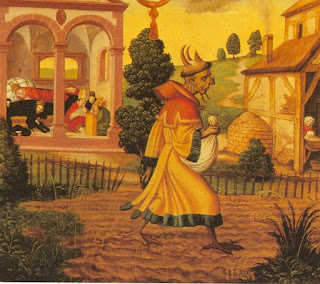The Abstract
The abstract of my Masters' thesis.
From the time of the Early Church until today, interpreters have employed a variety of hermeneutical methodologies to produce a range of different conclusions about the meaning of the so-called “Good Samaritan” passage of Luke 10:25–37. Nonetheless, when defending conclusions that differed from those of their contemporaries, every sincere and committed NT interpreter still referred to the same texts of Scripture as their contemporaries – a text which they all accepted as authoritative in their day. The present thesis is one such defence. The accepted text of its day is the twenty-eighth edition of the Nestle-Aland critical Greek text. The idiosyncratic interpretation it defends is called the “Grateful Victim Viewpoint” (GVV).
"The Good Samaritan" by Rembrandt (1630) public domain
The GVV theory of the Good Samaritan passage, which states that the didactic focus of the parable is the victim of the bandits, rather than the Samaritan, makes four significant assertions. Using an integrated historical-grammatical critical approach, this thesis builds an exegetical case for each of these assertions.
These four assertions are:
1. The parable is given as a direct answer to the lawyer’s second question (“And who is my neighbour?”). It identifies the object of the believer’s obligatory love for the neighbour.
2. There are “non-neighbours.” In bestowing mercy, the Samaritan became a neighbour; in revealing their lack of mercy, the priest and the Levite became non-neighbours.
3. Love for the neighbour in the merciful Samaritan parable is expressed as gratitude, not mercy, because in the passage it parallels love (gratitude) for God.
4. The focus of the parable is the victim. He is the character with whom the members of Jesus’ audience were to identify. His inert, wretched state relative to the neighbour is analogous to their state relative to God. Just as the victim is expected to revive and be eternally grateful to the Samaritan for his mercy, so, too, are those who understand the parable expected to awaken and be eternally grateful to God for his mercy in saving them.
The argument of this thesis will be restricted to establishing that the accepted Greek text of Luke 10:25–37 can be properly exegeted to defend these four assertions.
If you're intrigued at all by that, simply click here for a pdf copy.




Comments
Post a Comment